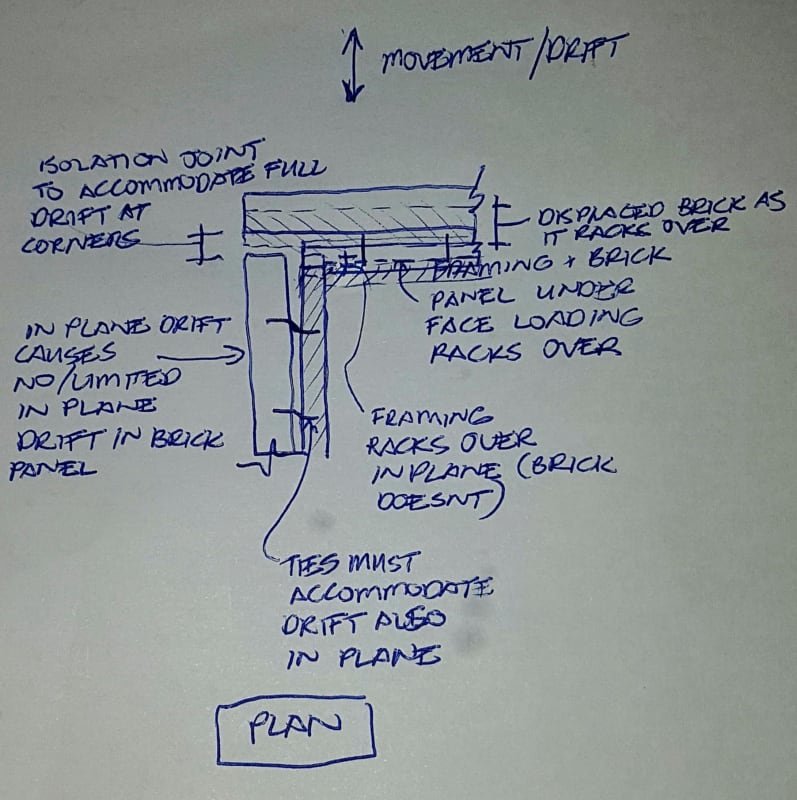NorthCivil
Civil/Environmental
- Nov 13, 2012
- 562
I have been asked to design a brick veneer wall for a project that has:
high winds (~3-4kPa ULS)
high seismic area
high heights - the client wants to install the brick at heights up to 10 stories.
So I have read the prescriptive requirements of the ACI, and I have the design nailed down. The veneer will be broken at every story on a shelf angle, with vertical control joints around openings and at ~15ft intervals. The prescriptive wall tie spacings will be enforced.
Thoughts on specifying a steel reinforcement lattice laid in the mortar joints that the brick ties connect to? i have seen conflicting information about this. I also have reservations about this, as the reinforcement will corrode over time which will actually weaken the mortar joints.
I've been researching this for a few months now, scoured the internet for information, tossed and turned at night for a while, called a bunch of local and overseas brick-layers and engineers, exhausted all avenues. Most of the responses have been "I wouldnt touch it with a ten foot pole", or "She'll be right", but hard to get in touch with an engineer with real, practical experience on this topic.
Now I'm reaching out to this community hat in hand -
my gut still isn't settled when we are talking about such a heavy, non-ductile material built up to these heights, in a dense urban environment.
any tips or guidance?
high winds (~3-4kPa ULS)
high seismic area
high heights - the client wants to install the brick at heights up to 10 stories.
So I have read the prescriptive requirements of the ACI, and I have the design nailed down. The veneer will be broken at every story on a shelf angle, with vertical control joints around openings and at ~15ft intervals. The prescriptive wall tie spacings will be enforced.
Thoughts on specifying a steel reinforcement lattice laid in the mortar joints that the brick ties connect to? i have seen conflicting information about this. I also have reservations about this, as the reinforcement will corrode over time which will actually weaken the mortar joints.
I've been researching this for a few months now, scoured the internet for information, tossed and turned at night for a while, called a bunch of local and overseas brick-layers and engineers, exhausted all avenues. Most of the responses have been "I wouldnt touch it with a ten foot pole", or "She'll be right", but hard to get in touch with an engineer with real, practical experience on this topic.
Now I'm reaching out to this community hat in hand -
my gut still isn't settled when we are talking about such a heavy, non-ductile material built up to these heights, in a dense urban environment.
any tips or guidance?

![[smile] [smile] [smile]](/data/assets/smilies/smile.gif) ). Here is a guide that discusses this type of system:
). Here is a guide that discusses this type of system: 